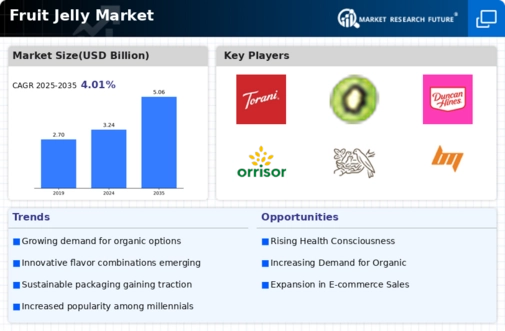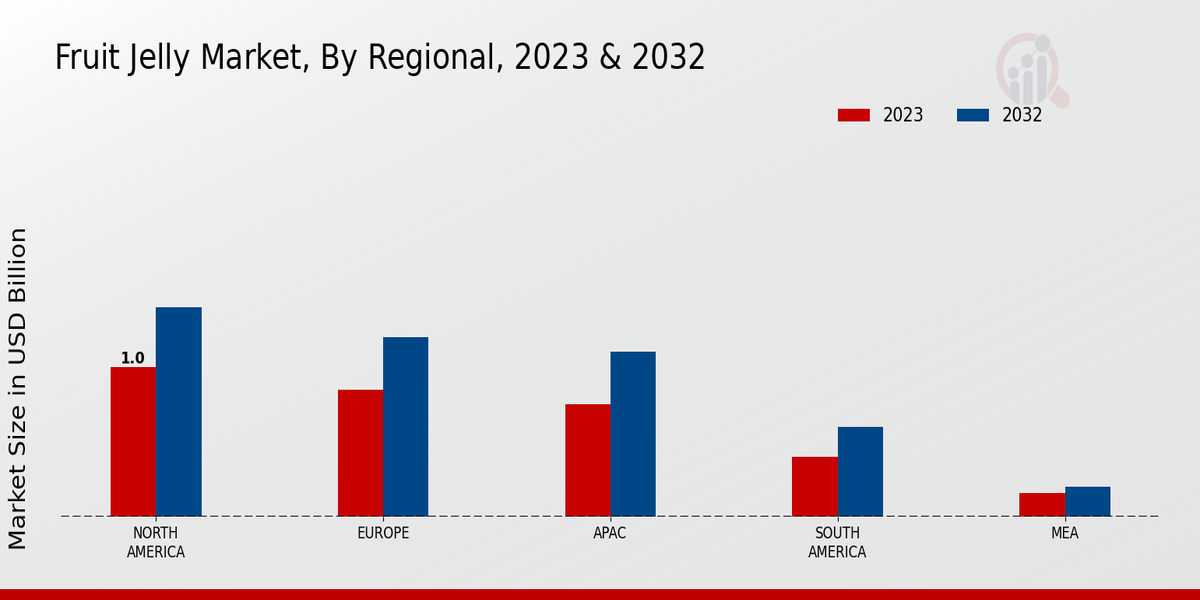Sustainability Initiatives
Sustainability initiatives are becoming a focal point within the Global Fruit Jelly Market Industry. As environmental concerns rise, consumers are increasingly favoring brands that demonstrate a commitment to sustainable practices, such as eco-friendly packaging and responsible sourcing of ingredients. Manufacturers are responding by adopting greener production methods and emphasizing their sustainability efforts in marketing campaigns. This alignment with consumer values may enhance brand loyalty and attract environmentally conscious buyers. The ongoing shift towards sustainability is likely to influence market dynamics, contributing to the anticipated growth of the industry.
Innovative Flavor Combinations
Innovation in flavor combinations is a driving force within the Global Fruit Jelly Market Industry. Manufacturers are experimenting with unique blends of fruits and complementary flavors, appealing to adventurous consumers seeking novel taste experiences. This creativity not only enhances product differentiation but also attracts a younger demographic that values unique culinary experiences. As the market evolves, these innovative offerings could potentially capture a larger share of consumer spending, further propelling the market's growth. The anticipated CAGR of 4.14% from 2025 to 2035 suggests that these innovations will play a pivotal role in shaping future market dynamics.
Health Benefits of Fruit Jellies
The Global Fruit Jelly Market Industry is increasingly recognized for the health benefits associated with fruit consumption. Fruit jellies often retain essential vitamins and antioxidants found in fruits, making them a more appealing option for health-conscious consumers. As dietary preferences shift towards functional foods, fruit jellies that promote health benefits may see a surge in demand. This trend aligns with the projected market growth, as consumers seek products that not only satisfy their taste buds but also contribute positively to their overall well-being. The market's expansion could be significantly influenced by this health-oriented consumer behavior.
Expansion of Distribution Channels
The Global Fruit Jelly Market Industry benefits from the expansion of distribution channels, including online retail and specialty food stores. This diversification allows consumers easier access to a variety of fruit jelly products, catering to different tastes and preferences. The rise of e-commerce platforms has particularly transformed how consumers purchase food products, enabling manufacturers to reach a broader audience. This trend is expected to contribute to the market's growth, with projections indicating a rise to 5.06 USD Billion by 2035. Enhanced distribution strategies may play a crucial role in sustaining this growth trajectory.
Rising Demand for Natural Ingredients
The Global Fruit Jelly Market Industry experiences a notable shift towards natural and organic ingredients. Consumers increasingly prefer products that are free from artificial additives and preservatives. This trend is driven by heightened health consciousness and a growing awareness of the benefits of natural foods. As a result, manufacturers are reformulating their products to align with these preferences, which may lead to increased market share. The market is projected to reach 3.24 USD Billion in 2024, indicating a robust demand for fruit jellies made from real fruit and natural sweeteners.





















Leave a Comment